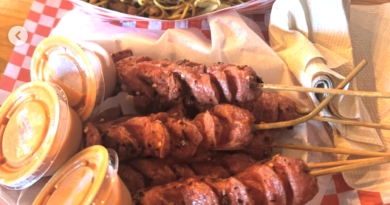History of St. Louis Missouri
St. Louis, Missouri is a city with a rich and diverse history that spans over 300 years. Founded by French fur traders in 1764, the city quickly became a hub for trade and commerce in the Midwest. The city’s strategic location at the confluence of the Mississippi and Missouri Rivers made it an ideal spot for businesses to set up shop, and it wasn’t long before St. Louis became a major player in the American economy.
One of the most significant events in St. Louis history occurred in 1804, when Lewis and Clark set out from the city on their famous expedition to explore the western territories of the United States. The expedition, which lasted for two and a half years, helped to open up the West to American settlers and solidified St. Louis’ position as a key gateway to the western frontier.
As the city grew and prospered, it attracted a diverse population of immigrants from all over the world, including Germans, Irish, and Italians. These immigrants brought with them their own cultures, languages, and traditions, which helped to shape the unique character of the city. Many of these immigrants settled in neighborhoods that still bear their names today, such as The Hill, which was originally settled by Italian immigrants, and Dutchtown, which was settled by German immigrants.
In the late 19th century, St. Louis became a major center of industry and manufacturing, with companies such as Anheuser-Busch, Ralston-Purina, and McDonnell Douglas all calling the city home. This period of industrial expansion was also marked by a period of rapid population growth, as people flocked to the city in search of jobs and opportunity.
The 20th century saw the city continue to grow and evolve, but it also faced its fair share of challenges. The Great Depression of the 1930s hit the city hard, and many businesses and factories closed their doors. However, the city was able to rebound thanks to the efforts of local leaders and the booming wartime economy of the 1940s.
The post-war period was marked by a period of suburbanization, as many residents left the city for the suburbs in search of larger homes and more space. This led to a decline in the city’s population, and many neighborhoods fell into disrepair. However, in recent years, there has been a resurgence of interest in the city, and many residents are moving back to the city and investing in the revitalization of its neighborhoods.
In the 21st century, St. Louis continues to evolve and change. The city has become a major center for healthcare, education, and research, with world-class institutions such as Washington University and Saint Louis University calling the city home. The city has also become a popular destination for tourists, thanks to its many museums, parks, and cultural institutions.
Overall, St. Louis’ history is a story of growth, change, and resilience. The city has faced many challenges over the years, but it has always been able to adapt and move forward. Today, St. Louis is a vibrant and dynamic city that is looking to the future with optimism and confidence.
Discover more from City Towner
Subscribe to get the latest posts sent to your email.




